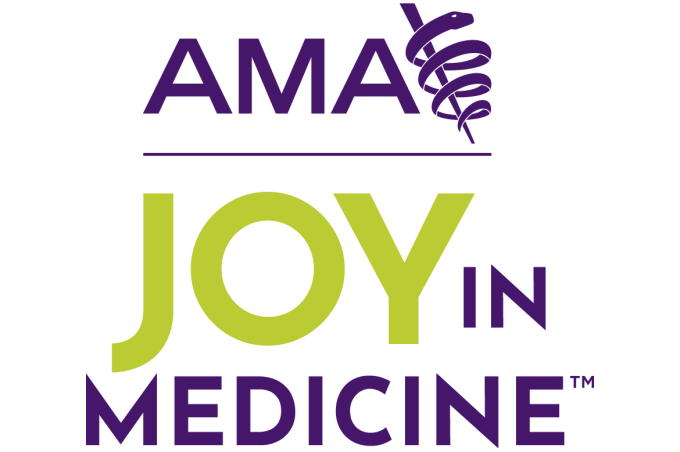Nigel Girgrah, MD, PhD, has been told his work as chief wellness officer at Ochsner Health is changing lives. He hears it from doctors across the Louisiana-based health system. He even hears it from physicians' spouses.
Dr. Girgrah and his colleagues have found effective ways to reduce burnout among Ochsner Health physicians. And it started with making physicians feel valued.
"There are many drivers of burnout that seem to be outside the organization's immediate sphere of influence, whether that's the local economy [or] CMS regulations," Dr. Girgrah said. "But I think this—making people feel valued—is a key performance indicator that an organization can really commit to and see changes over a reasonably short period of time."
Ochsner Health is a member of the AMA Health System Program, which provides enterprise solutions to equip leadership, physicians and care teams with resources to help drive the future of medicine.
In a recent episode of “AMA Update,” Dr. Girgrah discussed how a leadership program at Ochsner Health makes physicians feel valued at work and shared data showing its impact on reducing burnout.
Managing yourself before others
With the nationwide physician burnout rate at 48.2%, leaders at Ochsner Health decided to strategically invest in making it easier for physicians to practice, whether that means implementing ambient listening and AI-driven message-return programs or enhancing certain workflows.
Meanwhile, Ochsner Health removed stigmatizing mental health questions from its credentialing and peer-reference forms and expanded services that support mental health beyond employee-assistance programs.
The health system’s leaders also created the Office of Professional Well-Being that Dr. Girgrah leads, becoming the first health system in the state to develop that type of department.
One area of focus of the office is its personal leadership program.
"You can't lead others unless in well-being you're managing your own," Dr. Girgrah said. "Whether that's managing yourself in your personal life or managing yourself at work. We all need to manage the different components of our energy tank—the mental, physical, emotional and spiritual components."
As the leader in physician well-being, the AMA is reducing physician burnout by removing administrative burdens and providing real-world solutions to help doctors rediscover the Joy in Medicine™.
Helping lead fulfilling lives
The personal leadership course offered by the Office of Professional Well-Being provides physicians with the opportunity to focus on their personal and professional well-being and growth. A key component is a four-day leadership retreat.
During the retreat, the physicians don't talk about health care. They don't talk about Ochsner Health.
They talk about creating more fulfilling personal lives.
"The participants really take a deep look at their own life experiences, how that may have shaped the belief system that, in turn, has created biases," Dr. Girgrah said. "Some of these biases are good and have good outcomes for an individual, some may be not so good. At the end of the retreat, the participants commit to creating a plan toward more positive, healthy behaviors in the future."
Dr. Girgrah stressed that the personal leadership program is open to physicians across the organization.
"Whether you're a physician executive leading physician leaders, or a department chair leading patient-facing physicians, or a patient-facing physician leading your care delivery team, every physician is considered a leader," Dr. Girgrah said. "Professional development and career development drives engagement and well-being, not just in the participants, but also in their direct reports or, if they're in the clinical setting, the clinical teams they lead."
“More fulfilling lives”
While Dr. Girgrah can tell plenty of stories about how the program is helping individual physicians, the data about its impact also is illustrative. Ochsner Health surveyed 250 personal leadership program participants and compared key performance indicators to nonparticipants within the health system. The survey found that:
- 92% of participants felt job satisfaction compared with 75% of nonparticipants.
- 84% of participants felt valued by the organization compared with 55% of nonparticipants.
- 26% of participants felt burnout compared with 44% of nonparticipants.
"The individuals who have completed the program talk about how they're leading more fulfilling lives," Dr. Girgrah said, "not just at work, but more importantly, at home and with their families."
Across the organization, there's been a push to normalize the importance of mental health. And now, physicians at Ochsner Health, their loved ones, and the entire health system, are benefiting.
"Our physicians feel valued because we've really worked hard to promote a culture of well-being and support the mental health needs of our physicians," Dr. Girgrah said. "That really makes an impact with physicians."
“AMA Update” is your source for physician-focused news. Hear from physicians and other experts on trending public health concerns, practice issues and more—because who’s doing the talking matters. Catch every episode by subscribing to the AMA’s YouTube channel or listen to all AMA podcasts at ama-assn.org/podcasts.





